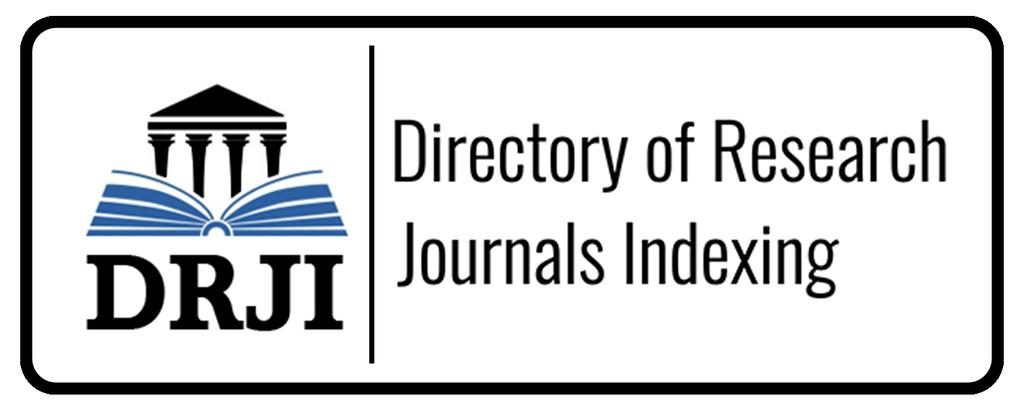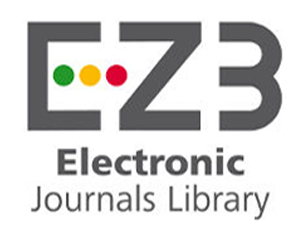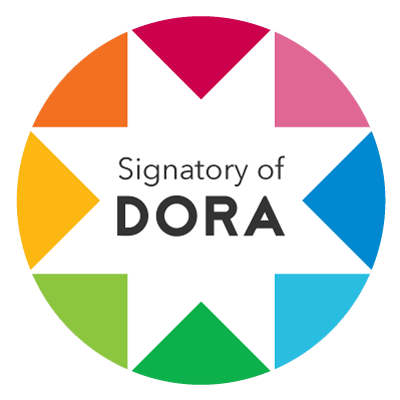The Tayacaja Scientific Research Journal is a peer-reviewed scientific journal produced by the National Autonomous University of Tayacaja Daniel Hernández Morillo, Peru (Pampas, Tayacaja, Huancavelica, Peru).
It is indexed to the following worldwide consultation databases:
Index:
 |
ERIH PLUS is an index of academic journals for the HSS (Humanities and Social Sciences) society in Europe. We provide Article Search powered by Dimensions, which allows you to explore all 10,000 ERIH PLUS journals in detail. |
 |
MIAR collects data for the identification and analysis of scientific journals. If any ISSN is entered in the search box, the system will locate in which databases of those included in the matrix the journal is indexed, whether or not it is included with its own record in MIAR, and will calculate its ICDS (not counting the Survival Index if it is not part of MIAR). |
 |
"REGISTERED" IN Latindex is the product of the cooperation of a network of institutions that work in a coordinated manner to gather and disseminate information on serial scientific publications produced in Ibero-America. The idea of creating Latindex arose in 1995 at the National Autonomous University of Mexico (UNAM) and became a regional cooperation network in 1997. |
 |
Latindex is the product of the cooperation of a network of institutions that work in a coordinated manner to gather and disseminate information on serial scientific publications produced in Ibero-America. Journals can be printed or electronic, from all scientific disciplines. |
 |
Directory of Research Journals Indexing The Directory of Research Journal Indexing (DRJI) aims to increase the visibility and usability of open access scientific and academic journals, thus promoting their greater use and impact. DRJI Supply Champion has access to world-renowned content in all discipline areas, including journal and magazine articles. We advocate, educate and provide the central resource for indexing. DRJI encourages the participation of all individuals, groups, and organizations interested in indexing and related information retrieval methods. |
 |
The REDIB criteria, originally based on the widely disseminated «Latindex Criteria», are aimed, in general, at guaranteeing the scientific nature of the journals in electronic format included in the platform, and in particular, at providing assistance and guidance to scientific content editors in improving their editorial practice. |
Repositories:
Search engines:
 |
BASE is one of the largest search engines in the world, especially for academic web resources. BASE provides more than 240 million documents from more than 8,000 content providers. You can access the full texts of approximately 60% of the indexed documents for free (Open Access). BASE is operated by the Bielefeld University Library. |
|

|
Google Scholar or Google Academic (in Spanish) is the Google search engine specialized in academic documents. It was created in 2004 and is the one you should use if you are a university student or are working on academic content. |
Library:
|

|
CrossRef is an Association of more than 1,400 publishers representing 4,000 societies and publishers including both commercial and non-profit organizations, its general purpose is to promote the cooperative development and use of new and innovative technologies to accelerate and facilitate scholarly research, it provides the technical and business infrastructure to provide this reference link through digital object identifiers, it also provides the query service for DOIs. |
 |
The Electronic Journals Library is a service to facilitate the use of scholarly journals on the internet. It offers a fast, structured and unified interface to access full-text articles online.
It comprises 106722 titles from all areas of research, 25012 of which are available online only. In addition, 136372 journals, which are provided by aggregators, are listed. The EZB contains 70878 journals which are accessible free of charge to anyone. Furthermore, the participating libraries provide their users access to the journals they subscribe to. |
Open access:
 |
OpenAIRE is a technological and service infrastructure created in 2009 to support, accelerate and measure the correct implementation of European open access policies for scientific publications and research data. OpenAIRE – Open Access Infrastructure Research for Europe (2009-2012). |
 |
What is Aura? AURA is the space from which AmeliCA intends to reflect the general state of scientific journals regarding the policies of opening and exploitation rights of scientific publication. The magazines are classified by colors following the taxonomy of DULCINEA and SHERPA/ROMEO. |
 |
LatinREV is the cooperative network of journals and associations of academic journals in the field of social sciences and humanities created at the request of the Area of State and Public Policy (directed by Dr. Daniel García Delgado and Cristina Ruiz del Ferrier), and the Library of Social Sciences "Enzo Faletto" (directed by Mg. María Cecilia Corda), of FLACSO Argentina in June 2017. |
 |
ROAD is a service offered by the ISSN International Center, with the support of the Communication and Information Sector of UNESCO ROAD is linked to the actions carried out by UNESCO to promote public access to scientific resources. |
Metrics























